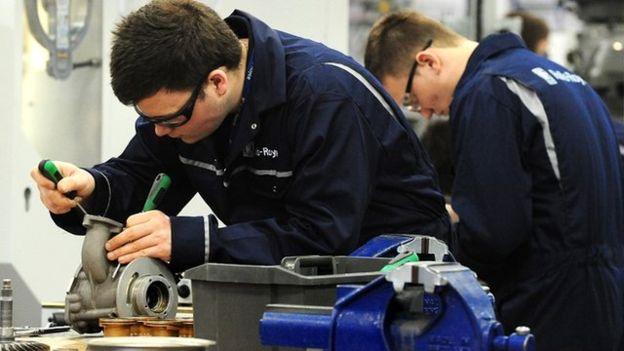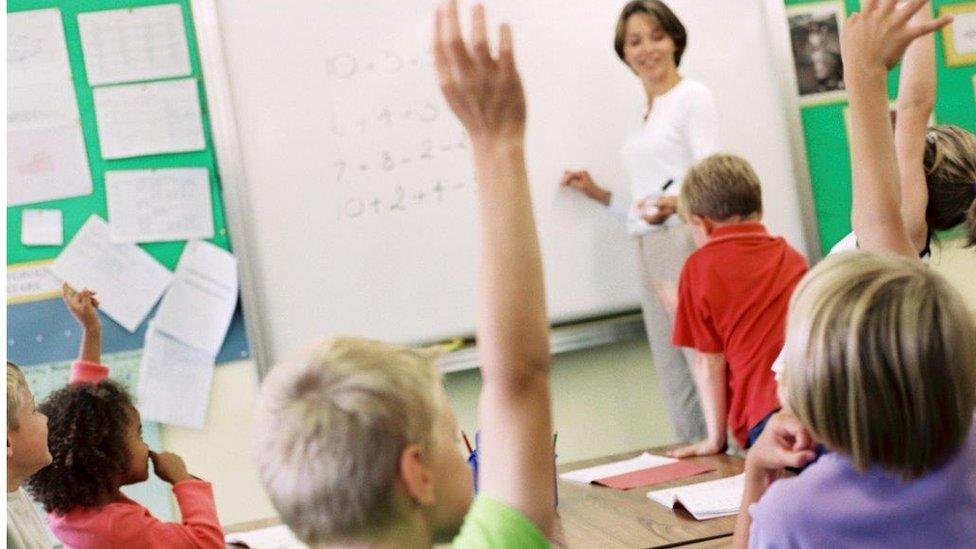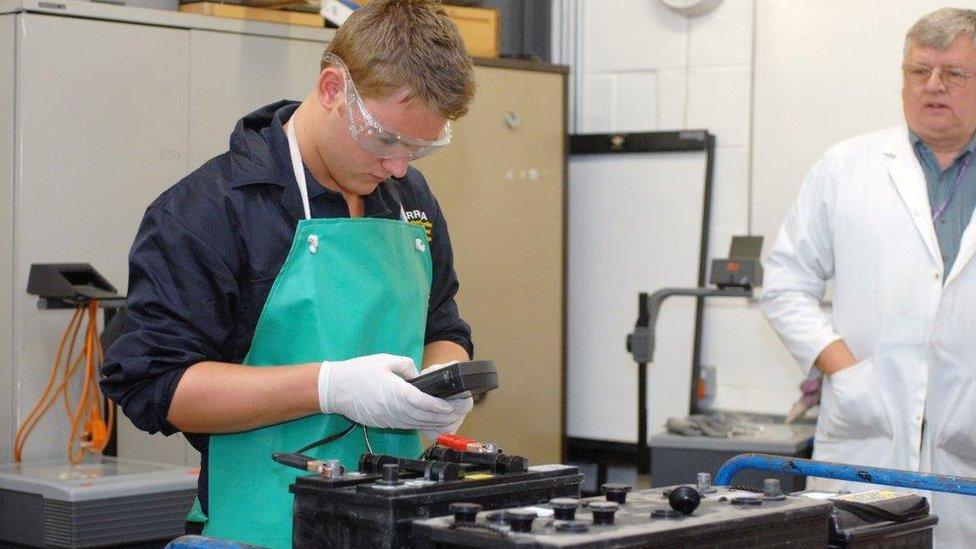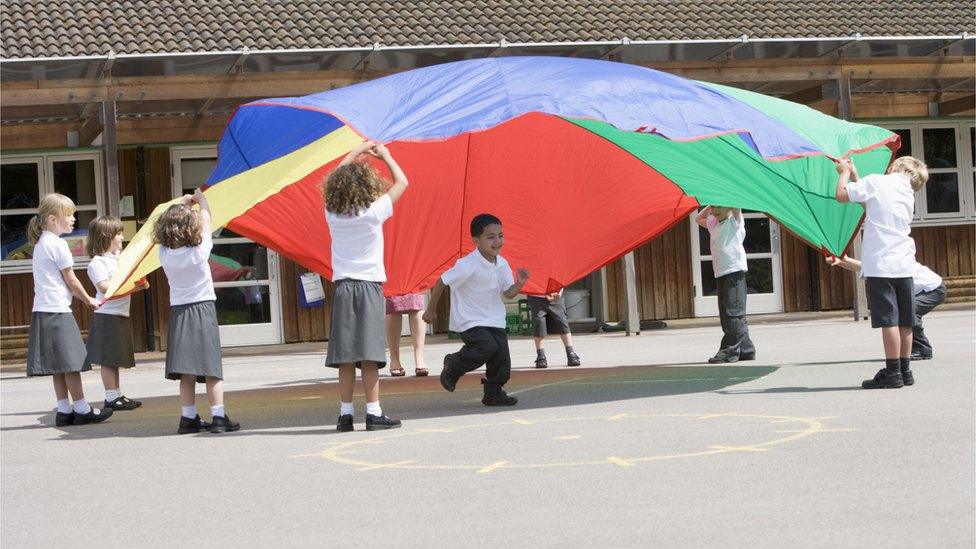Older teenagers face biggest funding cuts, says think tank
- Published
- comments

Sixth forms and colleges prepare teenagers for crucial exams but they are often the focus of cuts, says the IFS
Older teenagers have been the biggest losers as spending on sixth forms and further education has been "continually squeezed" for 25 years, says a report.
Spending on 16 to 18-year-olds has faced cuts too often while education spending overall has risen, says the Institute for Fiscal Studies.
However, government plans mean schools as a whole face "real-terms cuts for the first time in 20 years", it adds.
Ministers say they will protect further education until 2019-20 in cash terms.
According to the IFS, the last 30 years as a whole have seen increased spending per pupil for most age groups, and particularly for nursery age children.
But spending on 16 to 18 education has been "a notable exception".
Cuts 'challenge'
The authors warn that spending cuts in the pipeline for the coming years "present a challenge to continuing to provide high-quality education at every stage", but spending on further education will fall the most.
The report says government plans will mean that:
In schools - per pupil spending will fall 6.5% by 2019-20 on 2015-16 levels
In further education - per pupil spending will fall 13% by 2019-20 on 2010-11 levels
Early years spending will increase by 38% in real-terms by 2020 - though the amount per pupil will still be only about half that in primary schools.
"There is a strong case for the increased spending on early years education," said report author Luke Sibieta, an IFS associate director.
"The rationale for focusing cuts on 16 to 18-year-olds and in further education is much less obvious.
"The actions, as opposed to the rhetoric, of both Labour and Conservative governments suggest that they are agreed this is a low priority area for spending.
"Why they think that is unclear."
The report highlights how back in 1990 spending per pupil in further education colleges was 45% higher than in secondary schools.
But by 2019-20 it will be 10% lower.

Colleges also provide vocational training for young people hoping for technical careers
This is because spending in further education and sixth forms has grown more slowly than school spending during periods of expansion and has been less well protected from recent cuts, say the authors.
For schools, the challenge will be coping with the real-terms funding cuts at the same time as substantial reforms to the way funding is allocated under the government's planned National Funding Formula, they add.
'Not acceptable'
David Hughes, chief executive of the Association of Colleges, said the continued failure to protect the 16 to 18 budget was "not acceptable" and urged the government to review how money was divided between age groups.
"The biggest losers, of course, are 16 to 18-year-olds who miss out on the breadth, depth and support that they deserve as they make the daunting journey from childhood into adulthood.
"Colleges are on the front line of this under-investment and yet are critical to delivering the solutions. With the likely skills gaps created by Brexit we simply cannot afford to have this part of education underfunded," said Mr Hughes.
A Department for Education spokesman said it was "transforming" post-16 education and investing £7bn to ensure there was a place in education or training for every 16 to 19-year-old who wanted one.
"As a result we have the lowest proportion of young people not in education, employment or training since consistent records began in 1994."
- Published16 January 2017

- Published14 December 2016

- Published16 December 2015

- Published21 October 2015
